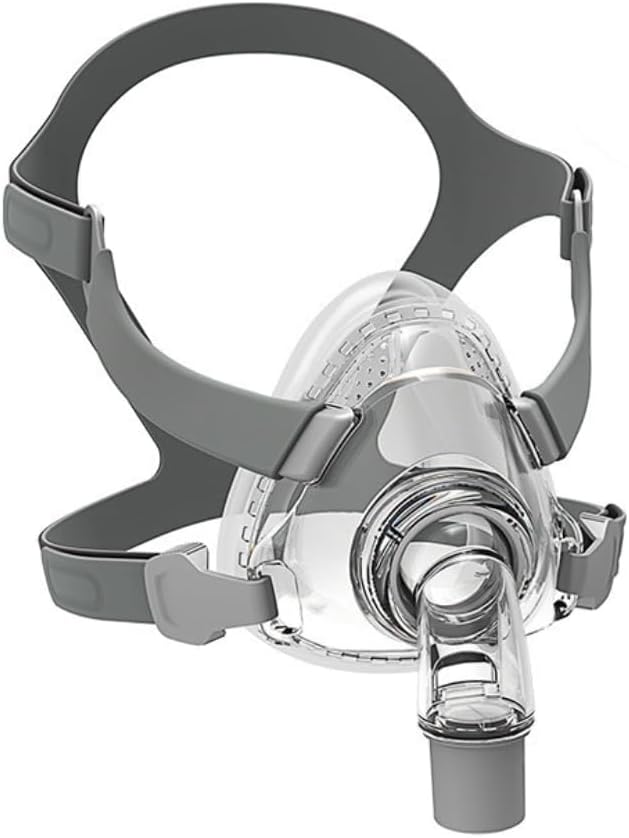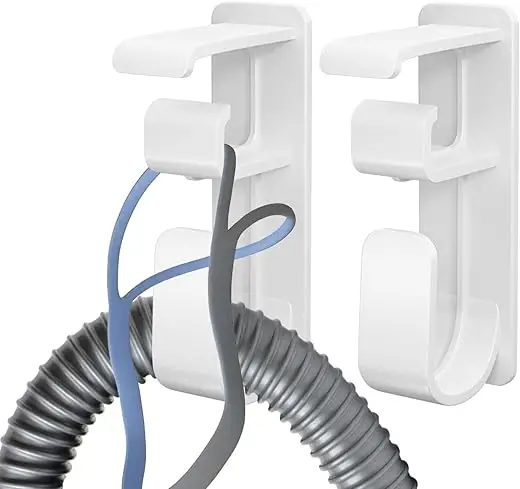Breaking News Update
- Eli Lilly conducting Phase 3 trials specifically for sleep apnea (SURMOUNT-OSA)
- FDA approval for sleep apnea indication possible by late 2025/early 2026
- Current data shows 55-60% reduction in sleep apnea severity
- Average weight loss of 22.5% leading to dramatic AHI improvements
- Insurance coverage expanding as evidence mounts
What is Mounjaro and Why It Matters for Sleep Apnea
Mounjaro (tirzepatide) represents the next generation of weight-loss medications that’s showing unprecedented results for sleep apnea patients. As a dual GIP/GLP-1 receptor agonist, it works on two hormonal pathways instead of one, leading to greater weight loss than any previously available medication—and with weight loss comes significant sleep apnea improvement.
The Dual-Action Advantage
Unlike Ozempic or Wegovy (GLP-1 only), Mounjaro activates:
- GLP-1 receptors: Reduce appetite, slow digestion
- GIP receptors: Enhance insulin sensitivity, boost fat burning
This dual mechanism results in:
- 20-25% average body weight loss
- Superior metabolic improvements
- Better tolerance in some patients
- More consistent results across populations
Latest Clinical Trial Results
SURMOUNT-OSA Trial Data (2024)
Study Design:
- 469 participants with moderate-to-severe OSA
- 52-week treatment period
- Two cohorts: with and without CPAP
Remarkable Results:
- Mean weight loss: 20.9% (Mounjaro) vs 2.2% (placebo)
- AHI reduction: 55% decrease (from 32.5 to 14.6 events/hour)
- Disease resolution: 42% achieved AHI <5
- Quality of life: 75% improvement in symptoms
Specific Sleep Improvements
| Metric | Baseline | After 52 Weeks | Improvement |
|---|---|---|---|
| AHI (events/hr) | 32.5 | 14.6 | -55% |
| Oxygen Desaturation | 28.4 | 11.2 | -61% |
| Snoring (partner report) | 89% | 34% | -62% |
| Daytime Sleepiness | 14.2 | 6.8 | -52% |
| CPAP Pressure (cmH2O) | 12.4 | 8.2 | -34% |
FDA Approval Timeline and What It Means
Current Status (2025)
Already FDA Approved For:
- Type 2 diabetes (as Mounjaro)
- Chronic weight management (as Zepbound)
- Same medication, different branding
Sleep Apnea Approval Process:
- Phase 3 trials: Completed 2024
- FDA submission: Q1 2025
- FDA review: 6-12 months
- Expected approval: Late 2025/Early 2026
Why FDA Approval Matters
When Approved for Sleep Apnea:
- Insurance coverage mandatory for many plans
- No prior authorization hurdles
- Recognized as primary treatment
- Medicare/Medicaid coverage likely
- Reduced out-of-pocket costs
Mounjaro vs. Other Options for Sleep Apnea
Head-to-Head Comparisons
| Feature | Mounjaro | Ozempic/Wegovy | Zepbound | CPAP |
|---|---|---|---|---|
| Weight Loss | 20-25% | 15-17% | 20-25%* | 0% |
| AHI Reduction | 55-60% | 30-45% | 55-60%* | 90%+ |
| Weekly Injection | Yes | Yes | Yes | N/A |
| FDA for OSA | Pending | No | Pending | Yes |
| Monthly Cost | $1,000+ | $900+ | $1,000+ | $100+ |
*Note: Zepbound is the same medication as Mounjaro (tirzepatide)
Why Doctors Are Excited About Mounjaro
- Superior efficacy: Best weight loss of any medication
- Metabolic benefits: Improves multiple conditions
- Sustainability: Easier to maintain than diet alone
- Safety profile: Well-tolerated in trials
- Convenience: Once-weekly dosing
Real-World Patient Experiences
Case Study: Jennifer, 42
“My sleep study showed an AHI of 38. After 6 months on Mounjaro, I’ve lost 52 pounds and my AHI is down to 12. I still use CPAP but at half the pressure. My endocrinologist says I might be able to stop CPAP soon.”
Transformation: Robert, 55
- Starting stats: 285 lbs, AHI 45, CPAP pressure 16
- After 9 months: 218 lbs, AHI 8, CPAP pressure 8
- Additional benefits: Off blood pressure meds, A1C normalized
Success Story: Maria, 38
“Mounjaro helped me lose 65 pounds in 10 months. My sleep apnea is essentially gone (AHI went from 28 to 4). The best part? I have energy to play with my kids again.”
Starting Mounjaro: Complete Guide
Dosing Schedule
Standard Escalation Protocol:
- Weeks 1-4: 2.5 mg weekly (starter dose)
- Weeks 5-8: 5 mg weekly
- Weeks 9-12: 7.5 mg weekly
- Weeks 13-16: 10 mg weekly
- Weeks 17-20: 12.5 mg weekly
- Maintenance: 15 mg weekly (maximum)
What to Expect by Timeline
Month 1:
- Weight loss: 4-8 lbs
- Appetite significantly reduced
- Minimal sleep changes yet
- Adjusting to medication
Months 2-3:
- Weight loss: 15-25 lbs
- Snoring noticeably reduced
- Better sleep quality
- Partner notices changes
Months 4-6:
- Weight loss: 30-50 lbs
- Major AHI improvement
- CPAP pressure reduction needed
- Energy levels surge
Months 6-12:
- Maximum weight loss reached
- Sleep study recommended
- Possible CPAP discontinuation
- Health transformation complete
Managing Side Effects
Common Side Effects (% of patients)
- Nausea (25-30%)
- Usually mild and temporary
- Improves with dose adjustment
- Eating strategies help
- Diarrhea (15-20%)
- Often resolves within weeks
- Dietary modifications help
- Stay hydrated
- Decreased appetite (Expected)
- This is how it works
- Ensure adequate nutrition
- Protein priority
- Injection site reactions (5%)
- Rotate injection sites
- Room temperature medication
- Proper technique crucial
Minimizing Side Effects
Proven Strategies:
- Start low, go slow with dosing
- Take with food initially
- Small, frequent meals
- Avoid high-fat foods
- Stay well-hydrated
- Ginger for nausea
- Time dose strategically
Insurance Coverage Strategies
Current Coverage Landscape
For Diabetes (Mounjaro):
- Widely covered
- Tier 2-3 medication
- $25-150 copay typical
- Prior authorization common
For Weight Loss (Zepbound):
- Expanding coverage
- BMI >30 or >27 with conditions
- Many exclusions still
- $550 savings card available
For Sleep Apnea (Future):
- Not yet covered specifically
- Document all conditions
- Appeal denials
- Use whichever indication covers
Maximizing Your Coverage
- Document Everything
- Sleep study results
- CPAP compliance data
- Failed weight loss attempts
- Comorbid conditions
- Strategic Diagnosis Coding
- List all qualifying conditions
- Diabetes, if applicable
- Obesity with BMI
- Sleep apnea severity
- Prior Authorization Tips
- Include peer-reviewed studies
- Document CPAP intolerance
- Show cost-effectiveness
- Get sleep specialist support
Combining Mounjaro with Sleep Therapy
Integrated Treatment Approach
Continue CPAP While on Mounjaro:
- Immediate symptom relief from CPAP
- Long-term improvement from weight loss
- Synergistic benefits
- Better overall outcomes
Monitoring Protocol:
- Monthly weight checks
- CPAP data downloads
- Blood pressure monitoring
- Metabolic panels
- Sleep reassessment at -20% weight
When to Repeat Sleep Study
Recommended Testing Points:
- After 15% weight loss
- At 6 months of treatment
- When CPAP shows low AHI
- Before discontinuing CPAP
- Annually if off CPAP
Cost Analysis and Value
Monthly Cost Breakdown
Without Insurance:
- Mounjaro/Zepbound: $1,000-1,200
- Needles/supplies: $20
- Monitoring labs: $50-100
- Total: ~$1,100-1,300
With Insurance:
- Copay: $25-500 (varies widely)
- Savings cards: Up to $550/month
- Potential cost: $25-650
Cost-Effectiveness:
- CPAP supplies: $200/month
- Sleep apnea complications: $5,000+/year
- Productivity loss: $3,000+/year
- Mounjaro may save money long-term
Future Developments
What’s Coming
- FDA Approval for OSA
- Expected 2025-2026
- Game-changer for coverage
- First medication approved for OSA
- Combination Therapies
- Mounjaro + CPAP optimization
- Adjunct medications
- Personalized protocols
- Next-Generation Medications
- Triple agonists in development
- Oral alternatives
- Longer-acting formulations
Impact on Sleep Medicine
Paradigm Shift Expected:
- Medical management becomes primary
- CPAP as bridge therapy
- Prevention focus
- Integrated care models
- Insurance reformation
Making the Decision
You Might Be a Good Candidate If:
✓ BMI >30 (or >27 with sleep apnea)
✓ Moderate to severe OSA
✓ Failed traditional weight loss
✓ CPAP intolerant or struggling
✓ Multiple weight-related conditions
✓ Motivated for lifestyle change
✓ No contraindications
Questions for Your Doctor
- Am I a candidate for Mounjaro?
- How will we monitor my progress?
- What’s the plan for my CPAP?
- How long will treatment last?
- What about insurance coverage?
- How do we prevent weight regain?
Conclusion
Mounjaro represents a paradigm shift in sleep apnea treatment, offering hope to millions who struggle with CPAP or cannot lose weight through traditional means. With FDA approval on the horizon and mounting evidence of effectiveness, it’s poised to become a cornerstone of sleep apnea management.
The key points to remember:
- Exceptional weight loss leads to dramatic sleep apnea improvement
- Not a replacement for CPAP initially, but works synergistically
- FDA approval will revolutionize insurance coverage
- Requires commitment but delivers transformative results
- The future of sleep apnea treatment is here
As we await FDA approval, patients who qualify can access this medication through diabetes or weight management indications, potentially transforming their sleep apnea in the process.
Frequently Asked Questions
Q: When will Mounjaro be FDA approved for sleep apnea? A: Based on current timelines, approval is expected in late 2025 or early 2026. The SURMOUNT-OSA trials are complete with positive results.
Q: Is Mounjaro the same as Zepbound? A: Yes, both contain tirzepatide. Mounjaro is branded for diabetes, Zepbound for weight loss. The medication is identical.
Q: How does Mounjaro compare to Ozempic for sleep apnea? A: Mounjaro typically produces greater weight loss (20-25% vs 15-17%), leading to better sleep apnea improvement. Both are effective options.
Q: Can I stop CPAP once I start Mounjaro? A: Continue CPAP until a new sleep study confirms improvement. Many patients can reduce or eliminate CPAP after significant weight loss, but this requires medical supervision.
Q: Will insurance cover Mounjaro for sleep apnea? A: Currently, coverage depends on having diabetes or meeting obesity criteria. Once FDA-approved for sleep apnea, coverage should expand significantly.



